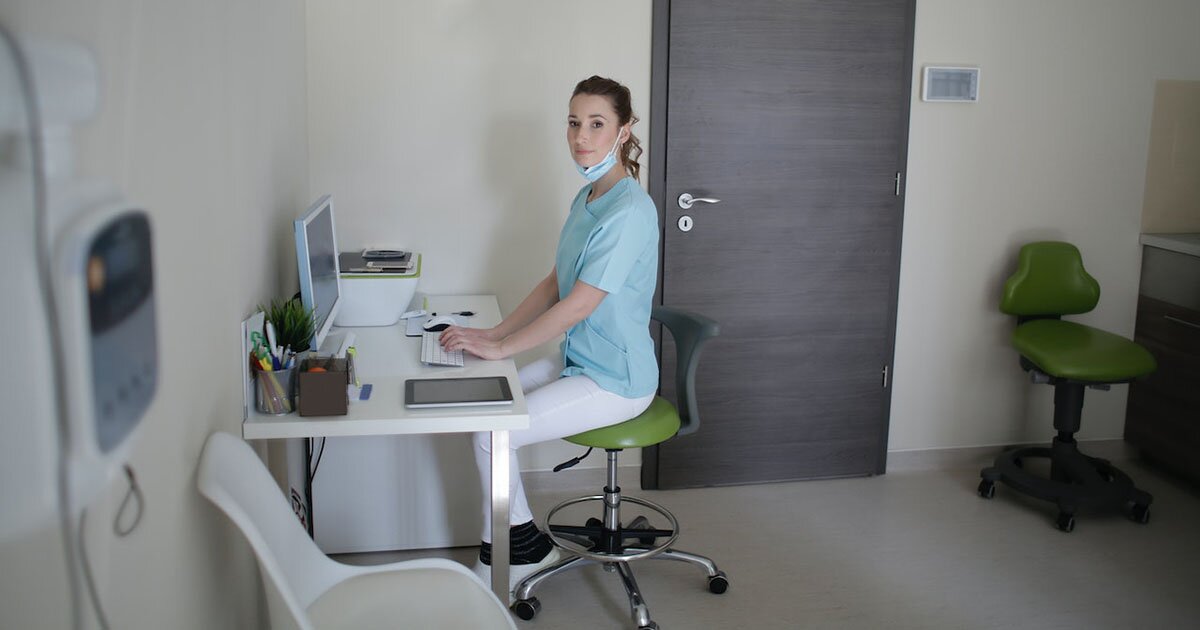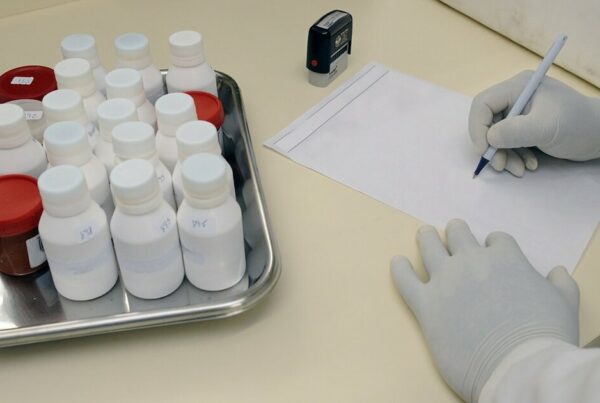There’s a cultural shift occurring among regulatory agencies worldwide. The FDA in the US, EMA in Europe, MHRA in the UK, and PMDA in Japan, have all demonstrated their interest in receiving source data in electronic form. Some have gone so far as to provide written guidelines on what they expect from the electronic source (eSource) data.
And it’s not just regulators: industry groups have also shown a significant interest in the potential benefits of eSource data and have shared their perspectives too. So it’s well established that eSource in clinical trials has the potential to benefit numerous stakeholders, but exactly what is eSource in clinical trials, and how will all stakeholders make the transition effectively?
What is eSource in Clinical Trials?
The clinical trial process is being accelerated by the pharmaceutical industry toward a much more streamlined process. As far back as 2008, a collaboration between the FDA and Duke University formed the Clinical Trial Transformation Initiative; designed to pick out the practices that can increase the efficiency of the clinical trial process. This initiative has already begun the transformation of the clinical trial process by changing how the monitoring of trials is conducted.
Electronic Source Data (eSource) was then defined by the FDA as “data initially recorded in electronic format”. This could be anything that is from the source, but the key is that it hasn’t been recorded in any other way before being recorded electronically. So, the first benefit becomes obvious: there’s no need for transcribing it into an EDC. As the FDA puts it: “any combination of text, graphics, data, audio, pictorial or other information represented in a digital form that is created, modified, maintained, archived, retrieved or distributed by a computer system.”
Some examples of eSource data might be data that come from:
- Devices – Participants and caregivers can provide eSource data remotely using all kinds of devices and apps including smartphones, wearables, and sensors.
- Direct Data Capture – This can be collected in the EDC, or otherwise into a mobile application by site staff.
- Non-Case Report Forms – These data avoid the use of CRFs by collecting and transferring data in electronic format from internal or external sources directly into repositories.
- Electronic Health Records (EHR) – Site and patient EHR for clinical research can be recorded electronically as eSource data too.
By making use of eSource, researchers are able to boost the consistency, accuracy, and overall legitimacy of their data. The benefits of cutting out data-entry and all its potential for error are immediately obvious, but there are other perks to it too, revolving around the ability for other stakeholders to access the source data in formats useful for remote monitoring.
The forms of eSource and their evaluation based on the technology, regulatory standards, and healthcare landscape are covered in detail by the TransCelerate eSource Initiative. But how can eSource be implemented, and why is it such a promising concept?

What’s the Difference Between eSource and EDC, ePRO?
It’s possible to integrate all of these platforms to create a more technological approach to trials, and as such, to understand where eSource fits into the landscape, it’s good to discuss the roles of each. eSource has been covered, so let’s go over the EDC and ePro before we discuss the differences.
ePro gives participants the capability of offering their reports and contributions throughout the trial process. This has been shown to be a popular method of engagement with participants and offers a fast and easy method of doing so. Electronic submission of these data also means that researchers have access to it quickly and remotely.
The EDC is the common method of collecting participant data in a clinical trial. This is the place where the data are kept and is used by sponsors and this can be combined with eSource, particularly in Investigator Initiated Trials, to streamline this collection process.
The differences between the three come down to the owners of the platforms. Sites usually own eSource, and sponsors tend to own EDC. EDC could be considered a form of eSource, but one that doesn’t collect all the types of data that an eSource collection would demand.
As for ePro, again, the benefits relate to the same time-saving process, by allowing participants to generate their own date. However, this data isn’t collected by researchers, but by participants.
So, each element can be implemented together to streamlining the entire data collection process across multiple points of entry. eSource, then, if widely adopted, would serve clinical trials in a number of beneficial ways.
The Potential Benefits and Future Vision of Widespread Adoption of eSource
The widespread adoption of eSource in clinical trials stands to benefit multiple stakeholders. Many of the benefits concern multiple stakeholders at once, and others have a more precise impact on specific areas of the trials. Here are a few of the potential positive effects:
- A dramatic improvement in the design and implementation of patient recruitment
- Faster and more accurate data collection, reporting, and monitoring across the board
- Better standardized data for machine learning purposes
- Better patient experience
- Real-time data access for review
From these potential benefits, there stands to be a cascade of positive effects from the successful adoptions of eSource, but there’s still a lot to do to get everyone onboard. Global implementation will take a significant amount of cooperation across stakeholders and a change in attitudes toward what even counts as source data.
To make things easier, a detailed future state should be mapped out so that stakeholders from every background have a common goal to work towards. This vision of how eSource can be used can help model policy and design the roadmap to implementation on a massive scale.
This future state should be one where all source data collection under any circumstance within the clinical trial process is done so electronically, standardized for purpose, and compliant with the updated global regulations concerning such data.
This means there’s a lot that needs to be done to reach this state, and change management needs to be focused on reducing the strain on any of the stakeholders beginning to implement this new technology in their processes.
The Transition to eSource Clinical Trials
The adoption eSource technology remains an appealing, yet convoluted process that requires facilitation from all sides. Currently, this process is fragmented, and the transition requires acceleration to reach a modern standard and realize the future state.

- Patients
- Sites
- Vendors of the appropriate technologies
- Regulators
- Funders
- Standards organizations
These, and others, need to align their efforts in response to the appropriate guidance to understand and promote the benefits to data integrity and power that eSource adoption promises. This will require deeper and more open communication that facilitates rather than hinders the sharing of information between groups.
Any transformation of this kind requires people to learn new things, to change the status-quo, and to adjust business and social models to embrace the change. With so many moving parts, this becomes a tricky issue to navigate, but with the right level of commitment and long-term vision, the benefits from the global adoption of eSource in clinical trials should be attainable quickly.
The good news is that the transition doesn’t have to involve a rapid overhaul of current patterns; it’s possible to adjust from paper to digital as an incremental process, for example, which should set the framework for gradual, organizational, improvements. Of course, the larger the organization, the more momentum it is likely to have, and the longer it can take to alter its course. This is where it’s so important to have a shared understanding of the direction and benefits everyone should be working towards.
The first step, then, appears to be to integrate eSource solutions with the database from the EDC. This brings in the immediate advantage of being able to review source data in real time, monitor and respond to data queries, and reduce the resources necessary to acquire and review the data. From planting these seeds of change, it’s likely that the transition will pick up speed as it evolves more organically into the future state. However, there will be some roadblocks.
The Challenges Surrounding eSource Clinical Trials
To get a feel for some of the anticipated challenges surrounding the adoption of eSource technologies, it’s possible to look at the struggles that are commonly faced when adopting any new approach to research. It’s worth noting that eSource data collection may require adaptions on a scale that the clinical sector has never seen before, and thus these challenges are likely to be amplified.
To take an example from the available literature, a 2020 paper detailing the TransCelerate point of view identified challenges, and proposed solutions, to achieving the future state. Some of these can be summarized as follows:
Problem – Rework occurs because Clinical Study Report development people are not involved with clinical trial design. This means that data needs adjusting or re-entering later in the process than it should.
Solution – Include eSource subject matters in the design of clinical trials. Subject matter experts should be present to submit and address various perspectives from different stakeholders on this design, making rework less of a possibility, and greatly increasing the time to execution by reducing protocol amendments.
Problem – Information and processes for querying and correcting source data are unavailable or hard to find.
Solution – Guidance needs to be consistent and appropriately applied for the correction of data. There is no clear global definition of data sources, and this is something that needs to be built up with time, but the authors proposed some definitions as follows:
- For apps and devices, third-party servers provide the true data source, and corrections should be performed either on this server or through the corresponding eSource modality.
- For Non-CRF, the corrections should occur on the third-party servers.
Problem – Implementation of eSource creates a strain on sites and participants due to a lack of training and an unfamiliarity with the technologies.
Solution – During trial design, patient and site perspectives relating to the use of eSource solutions should be a priority. Sponsors can improve patient and site engagement in this manner to increase the enthusiasm for and familiarity with eSource adoption.
Problem – Unexpected behaviors and errors at the point of data capture; errors in data entry or transfer occur.
Solution – Risk assessment and risk mitigation can be implemented into the design phase and in an ongoing manner; showing due diligence can reduce the risk and increase the acceptability of data.
These issues are common with the adoption of any new technology, and the solutions are suggestions based on tried and tested strategies to overcome other common problems. In summary, the transition from paper to eSource data stands to streamline a significant portion of the trial process, but it will take some time, and some commitment on the part of multiple stakeholders, worldwide.
This Transition Requires Collaboration
The major roadblocks to global adoption of eSource technology originate in the diversity of those needed to implement it. International, cross-industry stakeholders need to join a collaborative effort to engage with and bring onboard everyone who conducts research, provides systems and device, creates standards and regulations, sponsors research, and pays for treatment.
These stakeholders come from multiple backgrounds, such as:
- Academia
- NGOs
- Regulatory Bodies
- Health authorities
- Pharmaceutical companies
- Governments
And these are going to be the people responsible for establishing harmonized eSource guidelines for implementation and optimizing modalities, as well as developing the current technologies and advancing the data interoperability.
Adoption requires the understanding across all of these people that there is a present state of eSource and data collection already in use, and that it is possible to build off of this while attending to future needs as implementation progresses.
It’s important to recognize that this will involve a different path for everyone, as all sponsors and trials have their own unique challenges relating to implementation. The lack of a standardized set of regulatory guidelines further complicates this.
Therefore, the early stages of a push for global implementation should involve a primary focus on regulators, in collaboration with all other stakeholders, drawing up the guidelines for eSource use across all of the relevant contexts, which will allow for the natural progression of eSource adoption and its potential to reshape clinical research.
eSource Clinical Trials: How it Could Reshape Research
So, what does this all amount to? eSource remains a matter of potential, with all proponents acknowledging its slow and fragmented state of adoption. However, progress is being made, in the organizations already mentioned, and other such as the eSource Implementation Consortium. Adoption remains the clinical sector’s largest transformation to date, and the Consortium aims to accelerate this by way of bringing:
“science, industry, technology, and regulators together to work on the roll out of eSource applications that leverage electronic health records (EHR), electronic data capture (EDC), and clinical data management systems (CDMS).”
The members of the Consortium sit in on discussions with decision-makers and have ultimate goal of reshaping the way research is conducted by:
- Streamlining the existing nature of data transfer, creating more time for patient engagement
- Standardizing the methods of data collection and transfer
- Drawing up the best practices for scaling and widespread implementation of eSource
- Liaising with the FDA and other regulatory bodies in the process
The positive effect of their success will ultimately be that resources dedicated to clinical resources can be reallocated and reshuffled due to a significantly faster and more accurate data collection and processing system that follows a globally-recognized set of standards. Not only does this free up time to improve patient touchpoints, but it also improves the power of the data collected by improving its accuracy and usefulness in training the machine-learning algorithms of the future.
Conclusion
So, while eSource clinical trials have yet to take off, their potential to revolutionize the quality and integrity of clinical trials across a global body of stakeholders is undeniable. Unfortunately, lofty aspirations come with some substantial roadblocks that need to be addressed.
The major issue with implanting new technologies that affect so many stakeholders comes from the need for collaboration on an unprecedented scale. Guidelines need to be drawn up in the presence of all relevant parties, and for this to work, they need to all come together and agree on what eSource means to them.
While this is a huge endeavor, many organizations, regulators, and industry groups are already in the process of accelerating adoption, and if they succeed, clinical trials could enter a new era of data quality, leading to a streamlined and improved clinical research practice that’s more standardized for international collaborations.







